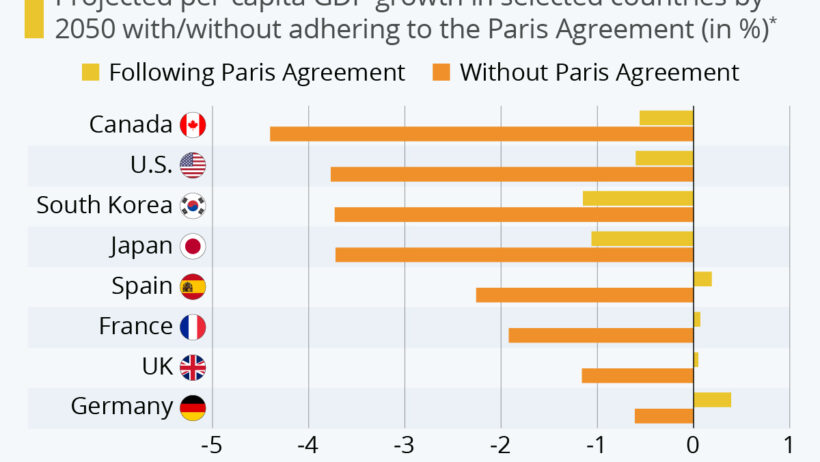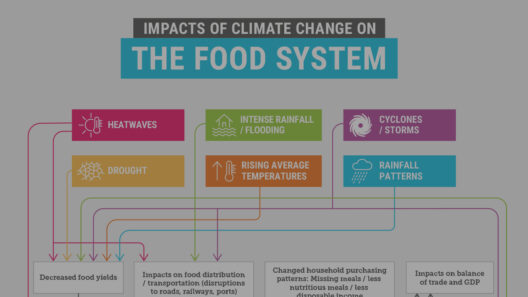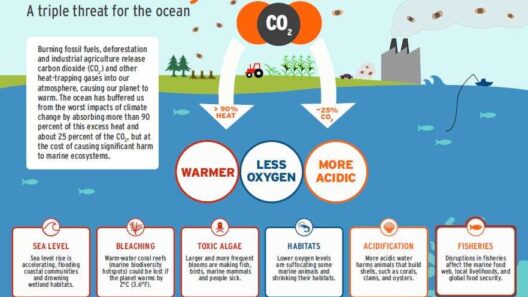As climate change accelerates, its repercussions reach deep into the economic fabric of nations worldwide. The landscape of commerce, production, and livelihoods is undergoing a profound transformation. The economic implications of climate change are not merely theoretical; they are manifesting in tangible ways that demand our attention. From extreme weather events to shifting agricultural patterns, the fluctuating climate is recalibrating the global economy, challenging long-held assumptions and compelling us to adapt.
To comprehend the broad economic ramifications of climate change, it is imperative to first understand its direct effects on resource availability. The changing climate alters precipitation patterns, leading to unpredictable droughts and floods. Agriculture, traditionally viewed as the backbone of many economies, is particularly vulnerable. With erratic weather conditions, crop yields become uncertain. Regions that once thrived on a specific crop may find their harvests diminished or entirely obliterated. An economic ripple effect ensues; not only do farmers see reduced incomes, but local economies struggle as consumers face higher food prices and food insecurity becomes recurrent.
Moreover, the ramifications extend beyond the farming sector. Industries reliant on agriculture, such as food processing and retail, also bear the brunt of these changes. As supply chains are disrupted, businesses must navigate increased costs and uncertain product availability. In essence, the interconnectedness of our economic systems means that the plight of one sector reverberates throughout the economy. This reality underscores the importance of cultivating resilience within agricultural practices and investing in sustainable alternatives.
Unfortunately, the strife in agriculture is not an isolated phenomenon. Coastal regions are feeling the consequences of climate change through rising sea levels. Cities like New Orleans, Miami, and parts of New York are grappling with the existential threat of flooding. These areas, rich in cultural heritage and economic activity, are at risk of losing not only physical infrastructure but also the economic vitality that they contribute to the broader economy. The insurance industry, which once viewed coastal properties as secure investments, is reassessing its strategies in the face of increased risk. Premiums soar, policies become less available, and the affordability of housing in vulnerable areas dramatically shifts. This creates a cycle of economic decline that can take years to reverse.
Additionally, the human cost of climate change cannot be overlooked. As extreme weather events become increasingly frequent and severe, communities find themselves in crisis mode. Natural disasters displace populations, forcing individuals to abandon their homes and livelihoods. The financial toll is significant: governments spend considerable amounts on disaster relief, reconstruction, and social services to support affected populations. Yet, the long-term economic consequences can be even more insidious. This displacement can lead to labor shortages in critical sectors, further destabilizing local economies.
Furthermore, the shift away from traditional energy sources is presenting a dual-edged sword. While the transition to renewable energy presents immense opportunities, it also necessitates a recalibration of existing economic structures. The fossil fuel industry, once a robust pillar of the global economy, faces mounting pressure. As policies favor greener alternatives, jobs in traditional energy sectors may vanish, leading to workforce dislocation. The urgency of this transition must be managed with foresight. Workforce retraining programs, investment in clean energy technologies, and the envisioning of new economic paradigms can pave the way for a smoother transition, one that retains economic vitality.
The investment landscape also reflects these changes. Investors are gradually shifting their portfolios to include companies that prioritize environmental sustainability and climate adaptation strategies. This movement—often labeled as “green finance” or “sustainable investing”—embodies a growing recognition that climate risks are, in fact, financial risks. Companies that fail to address their environmental impacts may find themselves facing diminished market confidence and, consequently, reduced valuations. The juxtaposition between short-term gains and long-term viability is becoming ever clearer; businesses that embrace sustainable practices are not only safeguarding the environment but also ensuring their own economic endurance.
On a broader scale, climate change influences global trade dynamics. The redistribution of production capabilities, influenced by climate resilience, alters trade routes and patterns. Countries that adopt early climate adaptation and mitigation strategies may position themselves advantageously on the global stage. For instance, nations investing in water conservation technologies, drought-resistant crops, and resilient infrastructure could become leaders in agricultural exports while others falter. The competition for resources will intensify, shaping alliances and tensions among nations as they navigate the new economic terrain.
As we assess the multifaceted economic impacts of climate change, a paradigm shift is essential. We must recognize that economic growth and environmental stewardship are not mutually exclusive; rather, they are interdependent. The climate crisis calls for innovative solutions that not only protect the environment but also foster economic resilience. By embracing this perspective, investors, businesses, and policymakers can cultivate a future characterized by sustainable growth that benefits both people and the planet.
In conclusion, the economy is feeling the burn of climate change, manifesting as a complex interplay of challenges and opportunities. The propensity for disruption looms large, yet within this turmoil lies the potential for transformation. To navigate this intricate landscape requires vigilance, adaptability, and a commitment to sustainable practices. As we forge ahead, it is imperative to embrace informed strategies that mitigate risks and harness the capabilities of the economy to address one of the most pressing issues of our time: climate change.





